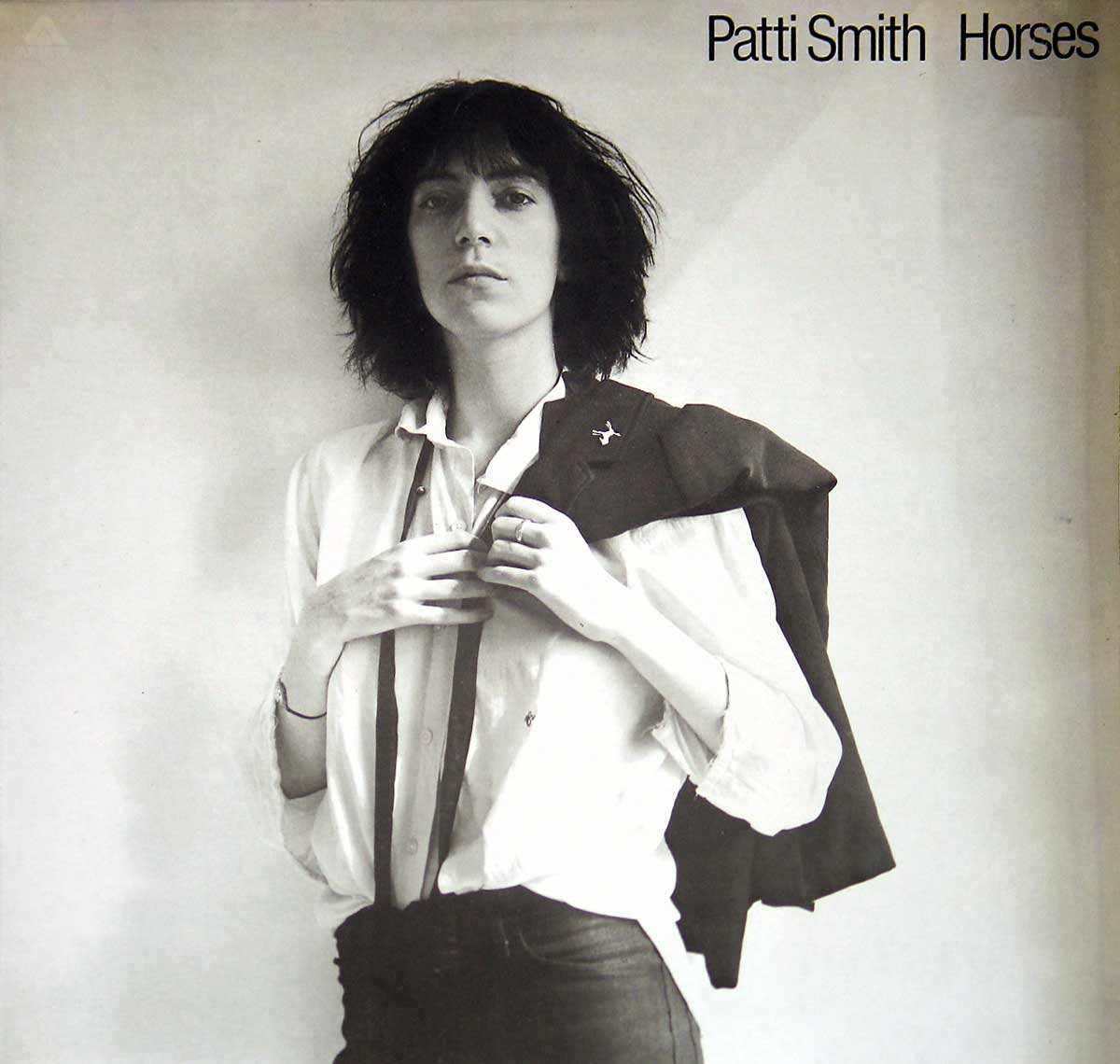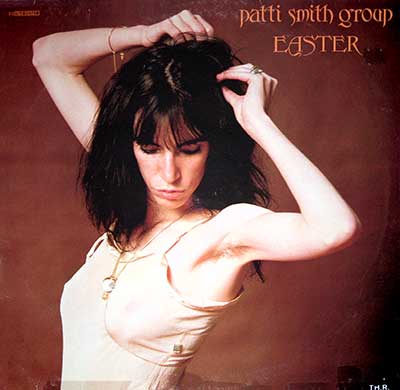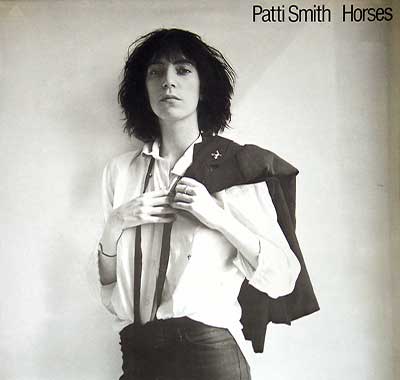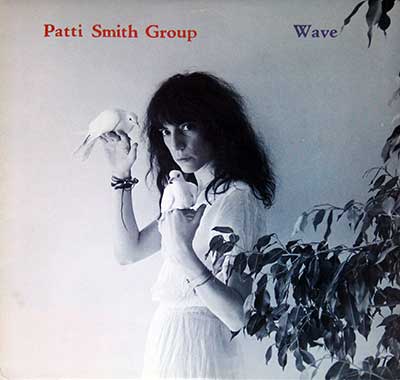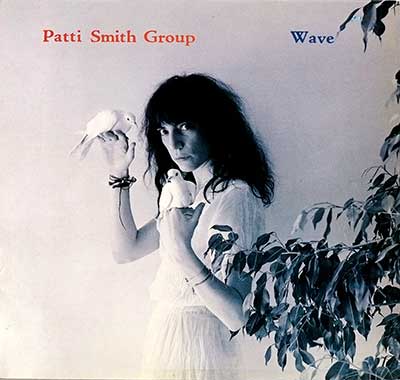The year is 1975, and the music world is in the midst of a volatile transition. Rock has splintered into myriad forms—progressive, glam, heavy metal—all vying for the throne vacated by the untimely demise of the '60s counterculture. Yet, in the grime and glamour of New York City, something else is fermenting. The city’s decrepit yet teeming underground is poised to birth a movement that will strip rock ‘n’ roll down to its primal core, reject the excesses of the past decade, and carve out a new, jagged path forward. Enter Patti Smith’s "Horses".
"Horses" isn't just a record; it’s a manifesto. It’s the sound of poetry and punk colliding in a head-on crash, a record that couldn’t have come from anywhere else or anyone else at any other time. It’s 12 inches of wax that demands to be heard, absorbed, and, most importantly, felt. And in a music scene increasingly saturated with polish and pomp, "Horses" is raw, immediate, and refreshingly unfiltered.
A Moment of Musical Chaos
In 1975, music was in flux. The revolutionary spirit of the ‘60s had soured, giving way to disillusionment. Progressive rock bands like Yes and Emerson, Lake & Palmer were taking rock music to new symphonic heights—or bloated excess, depending on your perspective. Meanwhile, disco was rapidly ascending, bringing with it a four-on-the-floor beat and a sheen that had little in common with rock’s rebellious roots. Amid this, glam rock stars like David Bowie and Roxy Music infused the scene with a theatrical flair, while proto-punks like the New York Dolls and The Stooges were scratching at the fringes, too volatile for mainstream acceptance, yet too vital to ignore.
Into this maelstrom came Patti Smith, a poet who had been a fixture in New York’s downtown art scene, reading at Max’s Kansas City and collaborating with artists like Robert Mapplethorpe. She wasn’t a musician in the traditional sense; she was a provocateur, a wordsmith, a woman who understood the power of rock ‘n’ roll not just as entertainment, but as an act of defiance.
Genre-Splicing and Musical Alchemy
"Horses" opens with an incendiary reinterpretation of Van Morrison’s “Gloria.” From the first moment, it’s clear this is no ordinary rock album. Smith’s voice—half chant, half scream—rips through the air with a primal urgency that sets the tone for the entire album. It’s a ferocious statement of intent, with Smith declaring, “Jesus died for somebody’s sins, but not mine,” before launching into a raw, propulsive riff that feels both sacred and profane. This isn't a cover; it's a reimagining, an exorcism of the past to make room for something new.
Musically, "Horses" defies easy categorization. It’s not punk, though it laid the groundwork for what punk would soon become. It’s not rock in the conventional sense, either. Instead, it’s a hybrid—a concoction of garage rock’s rough edges, the literary flair of the Beat poets, and the stark minimalism that would later come to define post-punk. Smith’s band—Lenny Kaye on guitar, Ivan Král on bass, Jay Dee Daugherty on drums, and Richard Sohl on keyboards—provided the perfect backdrop for her spoken-word style, oscillating between cacophonous bursts of noise and delicate, skeletal melodies.
Tracks like “Redondo Beach” and “Free Money” showcase the band’s versatility, effortlessly shifting from reggae-tinged grooves to frenetic rockers. Yet, it’s on the sprawling epic “Land” where Smith’s vision truly coalesces. A three-part suite that fuses surrealist poetry with rock ‘n’ roll fury, “Land” is a hallucinatory odyssey that references Rimbaud, the adolescent mythos of teenage delinquency, and an underlying sexual violence that simmers beneath its surface. It’s the kind of track that pulls you in, disorients you, and spits you out the other side, forever changed.
Controversy and Defiance
"Horses" wasn’t without its controversies. Smith’s brazen sexuality, her androgynous appearance on the album cover—dressed in a white shirt, suspenders, and a jacket slung over her shoulder—challenged the rock world’s gender norms. She wasn’t interested in being a rock goddess; she was there to burn the temple down. The album’s content, with its stark explorations of violence, sex, and rebellion, was equally incendiary, forcing listeners to confront uncomfortable truths about society and themselves.
Yet, this defiance was precisely what made "Horses" so compelling. Smith wasn’t just pushing boundaries for the sake of it—she was tearing them down because they were in the way. Her use of language was revolutionary in a rock context; she invoked the French Symbolists, the Beats, and modernist poets, intertwining them with the grit and grime of street-level rock. In Smith’s hands, rock ‘n’ roll became a vehicle for a kind of spiritual and intellectual liberation that was as threatening as it was exhilarating.
The Architect Behind the Sound
Much of the album’s raw power can be attributed to its producer, John Cale. A founding member of The Velvet Underground, Cale was no stranger to pushing musical boundaries. His work with the Velvets had already established him as an avant-garde force in rock music, blending classical training with experimental noise. For "Horses", Cale stripped the music down to its essentials, focusing on capturing the immediacy of Smith’s performance.
Recording at Electric Lady Studios in New York City, a space imbued with the legacy of Jimi Hendrix, Cale sought to preserve the raw energy of Smith’s live performances. He didn’t smooth over the rough edges; he amplified them, ensuring that every sneer, every growl, every explosion of noise was captured in all its unvarnished glory. The result is an album that feels less like a studio creation and more like a live transmission from the edge of the abyss.
Cale’s influence is particularly evident on tracks like “Break It Up,” which juxtaposes a churning rhythm section with ethereal, chiming guitars, and “Birdland,” where Smith’s free-associative lyrics are allowed to spiral into a fever dream of familial angst and cosmic longing.
A New Language for Rock
"Horses" was more than just a new sound; it was a new language for rock music. It wasn’t just about rebellion—it was about the power of the word, the intensity of expression, the sheer force of will. Patti Smith took the detritus of rock’s past—its poetry, its bravado, its unfulfilled promises—and reassembled it into something that felt wholly new, even if it was built from the bones of what came before.
In a sense, "Horses" was the birth cry of punk, though it wasn’t punk in the way that bands like the Ramones or the Sex Pistols would soon define it. It was more fluid, more expansive, less about the three-chord simplicity and more about the possibilities that arose when you fused the primal with the intellectual. It was the sound of a new generation being born, not in anger, but in the white heat of creativity.
And in Patti Smith, rock ‘n’ roll found its poet laureate, its shaman, its wild-eyed visionary, willing to drag the genre kicking and screaming into the future, one jagged riff and jagged verse at a time.
